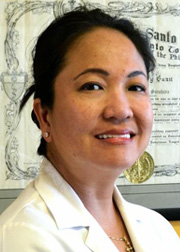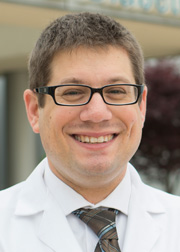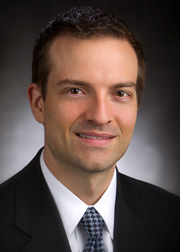…recognizing obesity as a multifaceted, chronic disease benefits patients who suffer from it
In August of 2016, the venerable Oxford Dictionary introduced its annual list of words being added to its modern language edition. One of these words was “fat-shame.” The addition was hardly surprising, as nearly everyone has witnessed the mocking and hurtful comments people make about the size and weight of other individuals.
What should come as more of a surprise is the August 3, 2017 headline of an article published on the website of The American Psychological Association: “Fat Shaming in the Doctor’s Office Can Be Mentally and Physically Harmful.” The article reads in part, “Disrespectful treatment and medical fat shaming, in an attempt to motivate people to change their behavior, is stressful and can cause patients to delay health care seeking or avoid interacting with providers.”

That the APA article was written in 2017 is particularly troubling in light of recent changes in thinking about obesity. “As a medical community, we’re now viewing obesity as a chronic disease,” explains Christa Black, PA-C, with Bon Secours Surgical Weight Loss Institute, a comprehensive program that incorporates nutrition, exercise, pharmacological therapy and surgery as well. Black, a member of the Integrated Health Executive Council of the American Society for Metabolic and Bariatric Surgery, adds “Those of us who’ve been caring for patients with this disease have known for years. We’d see problem lists that begin with conditions like diabetes, sleep apnea, hypertension, depression, GERD and so on, and at the very bottom of the list would be obesity – when obesity should be listed as number one, with the other conditions listed as a, b, c, etc. The chronic disease is the obesity – those other conditions are co-morbidities of obesity.”
Acknowledging obesity as a chronic disease represents a fundamental sea change. In 2017, within the bariatric community, the very terminology used to diagnose these patients is changing. Patients are no longer called obese; instead, they’re described as “having the disease of obesity.”

Unfortunately, as the August 2017 APA article demonstrates, there remain providers who haven’t accepted the change. “It’s been just within the last two years or so that the leading organizations, the CDC, the AMA and NIH, have regarded obesity as a disease that needs to be treated like any other chronic disease,” says Jennifer Pagador, MD, Medical Director of Seriously Weight Loss LLC. “I have patients who come to see me and say they’ve tried to talk to their doctors, but all they’ve been told, time and time again, was to diet and exercise. No support was offered, and these patients come to me feeling like they’re failures.”

“The change in thinking probably had its origins in the treatment of the 1980s and ‘90s, when medications for weight loss were approved for a single 12-week regimen – a very short course of time,” says Margaret Gaglione, MD, of Tidewater Physicians Multispecialty Group. “We don’t treat any other chronic disease like that. Obesity is not a curable disease; it’s a multifaceted disease that’s both behavioral and physiological, that needs to be managed every day.”

Genetics may play a role. There might be a genetic predisposition to obesity, says David C. Lieb, MD, an Associate Professor of Internal Medicine and Program Director of the Endocrinology Fellowship Program at EVMS. “There are multiple genes that have been associated with the risk for obesity, and probably even changes in utero that increase that risk,” Dr. Lieb notes. “There was a study published a number of years ago looking at mothers who got pregnant while they were obese, and later had bariatric surgery so they weren’t obese while pregnant with their second child. There were differences in the risk of obesity in the two children.” However, a study reported in the August 24, 2017 New York Times that examined “more than 10,000 mother-child pairs from birth to adulthood found that both maternal and paternal BMI were associated strongly with the metabolic traits of their children.” The article adds that “since paternal BMI cannot impact the fetus during its development, this suggests that familial traits, rather than any programming of the fetus in the womb, are the explanation for metabolic abnormalities in the children of obese mothers.”
Dr. Pagador cites a Harvard study originally published in June 2009, which found that, “The strength of the genetic influence on weight disorders varies quite a bit from person to person. Research suggests that for some people, genes account for 25 percent of the predisposition to be overweight, while for others the genetic influence is as high as 70 to 80 percent. Having a rough idea of how large a role genes play in your weight may be helpful in terms of treating your weight problems.” However, she emphasizes, “Just because you have a family history doesn’t mean you’re doomed. You can mitigate the risk.”
And Dr. Lieb cautions, “I don’t know that we’re at a place yet where we can use any of this information to make predictions so clearly, but the potential is there. And it continues to be studied.”
No matter the cause, obesity remains a growing problem in America. According to the Centers for Disease Control, more than one-third of US adults are considered obese, while about one in five school-aged children (ages 6–19) is classified as obese – a figure that has nearly tripled since the 1970s. A 2014 study in The New England Journal of Medicine found that kids who were obese or overweight by 5 years of age were likely to carry that weight through adulthood.

Obesity is particularly problematic in children, says William A. Hackworth, MD of Riverside Gastroenterological Specialists. “It’s certainly well understood that obesity affects health in many ways. Most of the leading causes of death – heart disease, stroke, diabetes, cancer – are all at least in part secondary to obesity. But for children and adolescents, it can be even more deadly: a recent study showed that being obese at the age of 17 can predict a patient’s risk of colon cancer at age 50.” That long-term study, done at Tel Aviv University, included a large cohort with a minimum follow-up of 10 years, and found that higher BMI scores correlated with higher rates of rectal cancer as well.

Virginia is 29th in the nation in terms of obese population, and Hampton Roads fares no better. In fact, according to the Virginia Department of Health, more than 550,000 residents of South Hampton Roads are classified as overweight or obese – or about 62 percent. “I don’t think we have a definitive answer as to why that is, “says Glenn Moore, MD, a bariatric surgeon with Chesapeake Surgical Specialists. “You see segments of populations that have higher obesity rates, and on a superficial level, I think our food preferences, our dietary habits, the availability of some foods, factor in. People in cities eat differently than people in the country, and people in the South eat differently than people in California.”
Prevention is key.
“What I’d like to see is people attacking their weight problems before they get to the point where they need any of the more drastic options,” Dr. Moore says. “I’d like to see these people seek help and get education and counseling, because it’s much easier to fix those things earlier than later.” Dr. Lieb agrees: “Traditionally, many of us have focused on the complications of obesity, not spending time on the actual prevention of obesity.”

Healthy You for Life: help for pediatric patients and their families.
For the children of Hampton Roads who are already experiencing the consequences of obesity, CHKD offers a program that helps them gain control of their weight and prevent future problems. Dominique Williams, MD is Medical Director of CHKD’s Healthy You for Life, which was developed in 2001. “These kids risk serious health problems, including diabetes, hypertension, depression and even self-esteem issues, just as adults do,” she says. “And just as with adults, everybody wants to talk about it, everybody feels the sense of urgency, but they’re just not sure how to move that child to a place of doing something about the weight.”
Dr. Williams understands well the difficulty of such conversations, but with a BS and MPH in nutrition and recent Board certification in Obesity Medicine, she feels comfortable initiating them. “The most important thing is that we deal with patients, not diagnoses,” she says. “We humanize treatment as much as possible, always acknowledging that these are human beings who are struggling. We encourage them to share their challenges and their barriers, and respect their vulnerability. We acknowledge that subjecting themselves to treatment takes courage.”
The program works with parents and children together, focusing on all aspects of weight management, including diet and food planning, physical activity and emotional support. There are medical clinic visits with yearlong follow-up and options for group fitness and health classes. The Healthy You for Life Clinic is open to children aged 3 years and older who have a BMI greater than the 85 percentile for age and gender.
“The primary way to get into the program is referral from a physician, nurse practitioner or physician assistant,” Dr. Williams says. “We make sure this is the best place for the child, and if it isn’t, we try to locate and connect them with resources that better suit their needs and interests.”
There are some adolescent patients who are so complex, whose lives are so impacted by the disease of obesity, Dr. Williams acknowledges, that surgical intervention is appropriate. “In those cases, the child runs the risk of being overcome by their other diseases. It becomes an all out war. But there are several objective pieces of data or criteria that must be met, and it requires an established relationship with the patient and family.”
Treatment options.
For morbidly obese adults, it’s statistically established that bariatric surgery is the most effective solution for rapid weight loss. There are several options, including the once popular band surgery, but that has been largely abandoned by most surgeons across the country because it wasn’t seen as effective enough for most patients. “What we do see more of now is the gastric sleeve,” Dr. Moore says, “and it’s a very good choice, sometimes a better choice for some people, but for many patients, gastric bypass is still the procedure of choice, because of its safety record and good long term results. And gastric bypass is the best option for diabetics and patients with severe reflux.”
Not all patients are candidates for surgery, and many don’t want or can’t afford it, but do feel they need intervention of some kind. For these patients, Dr. Hackworth offers the Reshape Balloon Procedure, a refinement of a similar technology that’s been used in Europe for about 20 years, successfully resulting in weight loss for tens of thousands of patients.
The procedure involves going into the patient’s stomach via endoscope to place two balloons, which are then inflated with fluid, Dr. Hackworth explains. The balloons stay in the stomach and give the patient the feeling of fullness and satiety, while limiting the amount of food that can fit in the stomach. “The Reshape differs from the original single balloon procedure in several ways,” he says. “The traditional single balloon would sometimes pop and pass into the small bowel, where it could cause obstruction. And the single balloon didn’t fit well because of the stomach’s J shape. With the Reshape, the two balloons are tied together and placed to fit the stomach’s contours. Using a smaller volume in each balloon, we’re able to achieve a higher overall volume. If one of the balloons should pop, there’s virtually no risk of it passing into the small bowel and causing complications. The other remains inflated.”
In the Seriously Weight Loss LLC program, the emphasis is on psychological management and intensive counseling to help patients modify their behavior, Dr. Pagador explains. “Cognitive behavioral therapy is the foundation of treatment. Some patients come with a history of childhood trauma, but many are just experiencing the stress of 21st century living: a hectic work schedule while trying to balance caring for small children and aging parents, etc. Many self-describe as stress eaters or emotional eaters, depressed eaters. We start with a minimum of an hour of counseling on lifestyle, stress management, and diet and exercise.”
Before any treatment is begun, patients have an EKG and bloodwork to identify any medical issues not immediately evident. Medication, when used, is carefully regulated and monitored. “The patient’s BMI must be 30, or 27 with one or more co-morbid conditions. But we always start with lifestyle changes, with diet and exercise.”
To all of her patients, Dr. Pagador emphasizes that they have a chronic disease that will always need to be managed – regularly and for a lifetime for some patients, and occasionally for others.
Dr. Gaglione takes a similar approach with her patients at Tidewater Bariatrics, with a heavy emphasis on medical nutritional therapy. She too reinforces that her patients are dealing with a chronic disease. “Whether they choose a medically directed program like ours, or opt to have surgery, patients will still need to manage their disease state, just as diabetics or anyone with chronic hypertension do,” she says, “and even more so, because environmental control and what they’re surrounded by are critically important.”
For Dr. Gaglione’s patients, that involves learning and practicing new skills, and changing the patient’s relationship with food. There are important tools like the well-known HMR program (Tidewater Bariatrics is the only full in-clinic HMR program in Virginia), which teaches structured eating, whether on HMR meals exclusively, or HMR prepared foods supplemented by fruits and vegetables chosen by the patient.
Once the weight is lost, “It’s important that patients understand that if they have a history of morbid obesity and they are no longer morbidly obese, they still have the disease,” Dr. Gaglione says. “It’s always going to be with them.”
Going forward.
Every physician and provider interviewed for this article agreed that it is time for the stigma – the fat-shaming too long attached to obesity, both within and outside the medical community – to disappear. “As physicians, we all need to do a better job of focusing on the prevention of obesity,” Dr. Lieb says.
“Obesity is a stubborn problem,” Dr. Hackworth says. “Surgery is not the solution for the disease itself. In our program, patients receive nutritional and dietary counseling and exercise coaching. They meet regularly throughout the year. Weight loss doesn’t happen if the patient isn’t motivated and willing to make some changes.”
“It’s a complex, multifaceted disease,” Christa Black says, “and there’s no one-stop cure for it. We’re at the point where we have to almost throw everything but the kitchen sink at each individual patient, to see what works. It takes a multidisciplinary, team approach. And thankfully, there’s a real paradigm shift happening now.”

